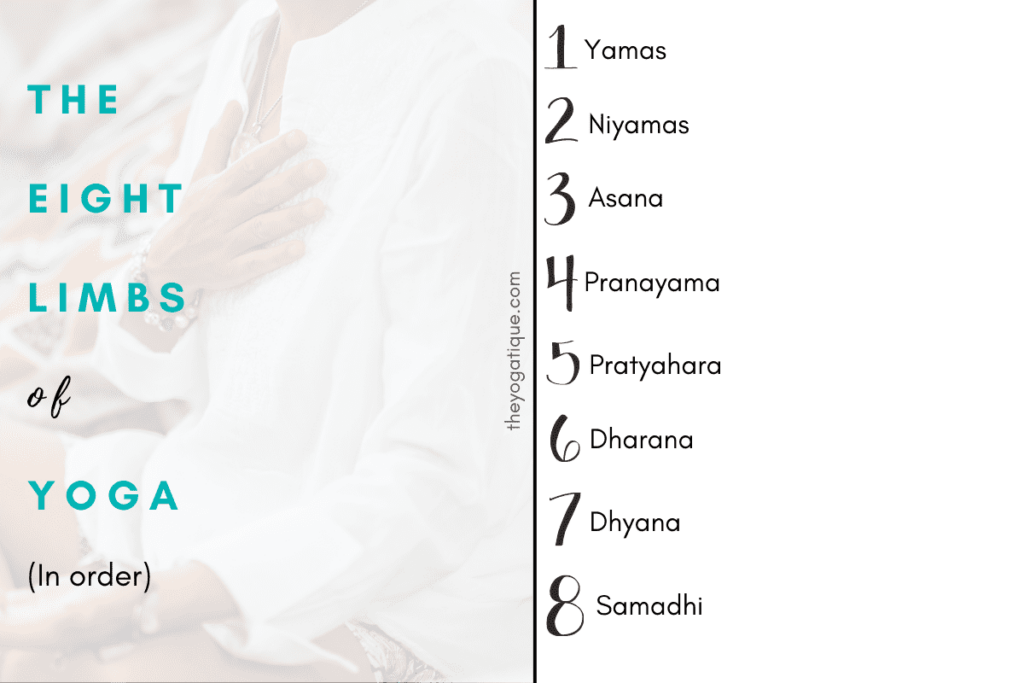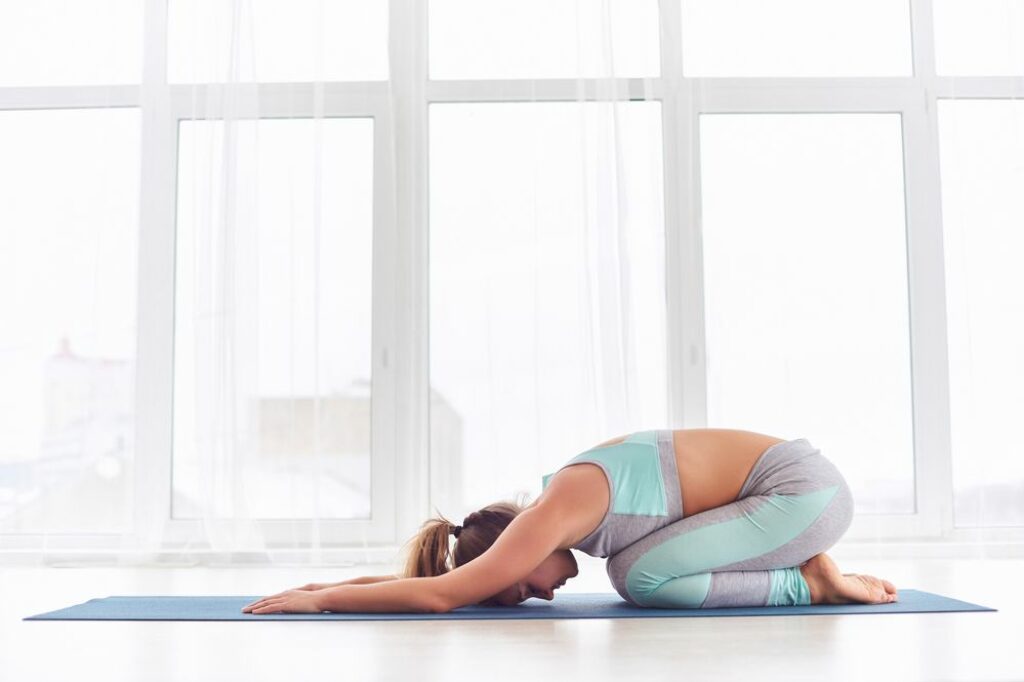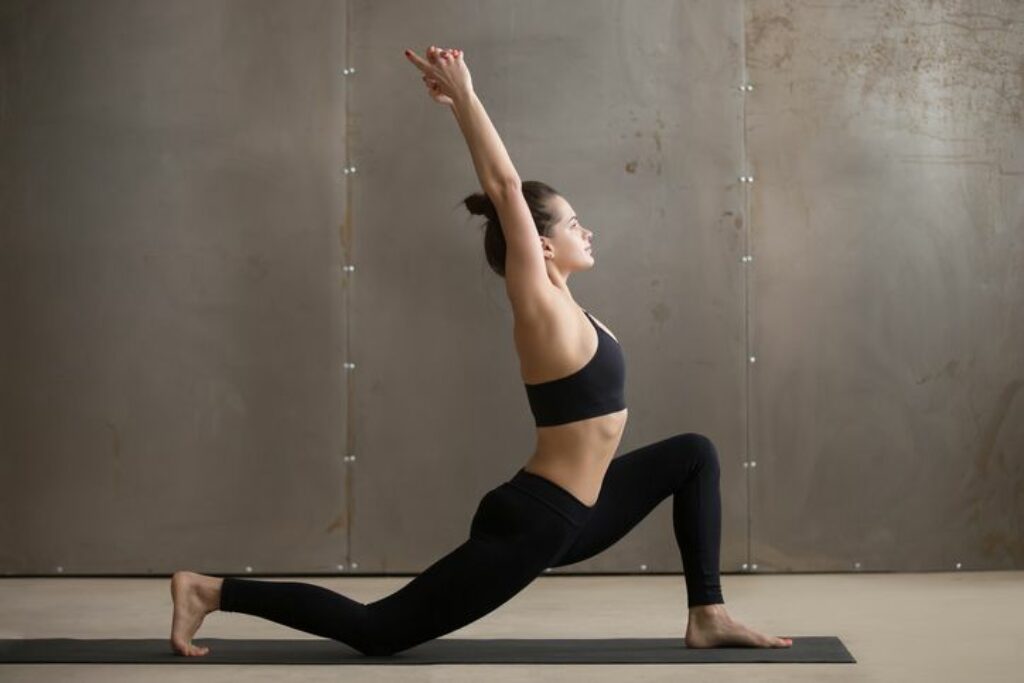If you’ve ever attended a yoga class online or in person, you may have heard the term ‘asana’ used. If you've been wondering what asana means, this will be an interesting read!
In this article, we're exploring the evolution of this ancient Sanskrit term to better understand what the word asana means in a yogic context. We'll discuss the English and Sanskrit definitions of asana and its role in yoga. Surprise! There's more to yoga than asana!
As you'll learn (or may already know!), ‘asana', ‘yoga pose', and ‘yoga posture' are all interchangeable in modern-day yoga classes. But as yogis, we should still know the most fundamental yoga Sanskrit terms, like this one!
There are countless asanas that are woven into modern-day yoga classes and morning yoga routines. For example, twists, backbends, forward bends, and balancing postures are all actually traditionally called yoga asanas.
As you'll learn later, asana is the ‘third limb of yoga' in the Hatha yoga tradition. If you're wondering what the third limb of yoga even means, don't worry, we'll get to that too!
Article content:
(Click any link below to jump directly to section)

IS YOGA TEACHER TRAINING ON YOUR RADAR?
Online Yoga Teacher Training Offers
- Affordability
- Flexibility
- Certification
- Lifetime access
⬇Click below to discover the best Yoga Alliance registered online YTT's to join now ⬇
What does asana mean in yoga?
Simply put, the word asana in yoga means yoga pose. In yoga, the words asana, pose, and posture are interchangeable and mean the same thing.
What does asana mean in Sanskrit?
The original meaning of asana in Sanskrit is ‘pose’ or ‘seat,’ but not just any seated position because the word asana implies an engaged and purposeful body positioning. The original Sanskrit definition is a pose that allows a person to be motionless and upright for many hours, enabling them to rise above body consciousness.
Sitting upright with a straight spine, core engaged, shoulders back, head upright, legs crossed, and hands resting on your knees is considered the original Sanskrit asana.

Understanding asana in the 8 Limbs of Yoga
Asana is the third limb of the eight limbs. The Eight Limbs of Yoga refer to texts written by Patanjali and act as a guide for living a peaceful, meaningful, and purposeful life.
Understanding and living the 8 Limbs Of Yoga is a lifelong quest and commitment to living an emotionally and physically healthy life.
The Eight Limbs Of Yoga are listed in their order of importance. Notice that asana is the third limb of the 8 Limbs Of Yoga. What does that tell us?! That indicates that the Yamas and Niyamas actually deserve more nurturing and emphasis than our physical yoga practice. Interesting, isn't it? The 8 Limbs Of Yoga in order are:
- Yamas
- Niyamas
- Asana
- Pranayama
- Pratyahara
- Dharana
- Dhyana
- Samadhi

The history of the word asana
Asana first appeared in Patanjali's 8 Limbs of Yoga. Since the time of its writing, the word asana has taken on a new, broader meaning.
Patanjali, the author of The Yoga Sutras and the 8 Limbs of Yoga, originally defined an asana as a seated meditation-type position.
However, modern-day Hatha yoga practitioners have started to define asana a bit differently in that any pose can be described as an asana.
For example, the classical texts of Hatha yoga refer to eighty-four different asanas versus Patanjali's one asana. In Hatha yoga today, Warrior 1, Warrior 2, Chair pose, and all other yoga poses that may be performed in a yoga class are all considered and called ‘asanas'.
But, the yoga postures mentioned above all have one thing in common, mindfulness, purpose, engagement, alignment, and an intentional breath.
Benefits of practicing yoga asanas
Performing asanas has a wide range of benefits, both physical and spiritual. Many yoga asanas help improve flexibility and strength, while others are grounding and promote relaxation.
In the Hatha tradition of yoga, asanas often involve breathing exercises. This combination of breath and movement can help reduce stress and anxiety and improve focus.
Some yoga asanas have been known to reduce fatigue, enhance sleep quality, and improve mental clarity, while breath and movement in tandem can also help to lessen chronic pain, lower hypertension, or even improve blood circulation in the body.
Really, many asanas are incredibly beneficial in terms of what they can do for the mind and body.
3 common yoga asanas
Now that you know more about how the term asana is defined in modern times, three yoga asanas that are commonly practiced today are:
1. Balasana (Child's pose)
Child's pose is a resting pose and a counter asana for various other poses. Here's how to do child's pose:
- From a tabletop position with your knees hip-width apart, sit back on your heels.
- Lower your torso toward your thighs and your head to the floor. Then, stretch your arms over your head or place them beside you.
Child's pose is often performed multiple times in a yoga class, especially Vinyasa yoga classes.

2. Anjaneyasana (Low lunge)
Anjaneyasana, or low lunge, is a back-bending asana. Here's how to do low lunge pose:
- From mountain pose, step back with one leg and lower your back knee to the ground.
- Stack your front knee on top of your ankle.
- Bring your arms and hands up for the full expressions.

3. Adho mukha svanasana (Downward-facing dog)
Down dog is one of the more commonly known and first-learned yoga asanas. It is a mild inversion that calms the nervous system and helps relieve stress. Here's how to do downward facing dog:
- From a tabletop position, press your hips up and back until your body is in an inverted V-shape.
- Your hands should be shoulder-width apart, and your hands and feet should be firmly planted and gripping the mat.


SEARCHING FOR THE BEST
ONLINE YOGA MEMBERSHIP TO JOIN?
Online Yoga Subscriptions Offer
- 1,000's of classes
- Best instructors
- Affordability
- Flexibility
⬇Click below for the best online yoga memberships ⬇
FAQ about asanas
What are the four categories of asana?
The 4 categories of asana are: standing, sitting, prone (poses with the belly or torso touching the floor), and supine (poses that are performed lying down or on your back).
Is yoga just asana?
Yoga encompasses much more than the movement practice. Many people are not aware of this. In fact, despite the fact that asana is the third limb of yoga in the eight limbs of yoga, asana is only mentioned in three of the 196 yoga sutras!
Some online yoga studios, online yoga teacher training programs, and brands that we write about may offer us a small commission should you decide to make a purchase or signup after reading our content. Thank you for enabling us to exist!








